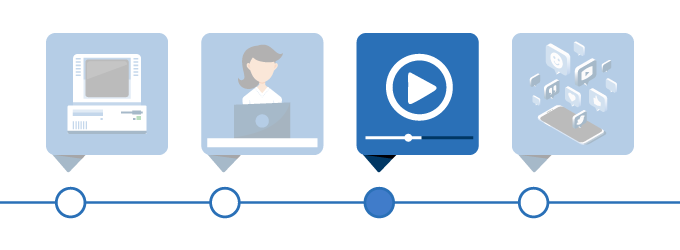There are hundreds of millions of blogs on the internet today. More than 440 million blogs are found on Tumblr, Squarespace and WordPress alone, according to marketing agency Mediakix. Blogging is now a household term and holds a firm place in culture.
It may be surprising to learn that the history of blogging dates back to 1994, which predates social media by at least a few years. The following timeline looks at the history of blogging, from its inception to its modern status.
History of Blogging: A Timeline

The Early Years
1994: First blog created by Justin Hall on Links.net
Hall created the first blog at Links.net, which contained “essentially a review of HTML examples he came across from various online links,” according to HubSpot. The term “blog” had not been coined; Hall referred to it as his personal homepage.
1997: The term “weblog” was coined by Jorn Barger
Other people followed in Hall’s example and shared their personal lives online. Jorn Barger coined the term “weblog” to describe these sites; the term reflected the process of “logging the web” as he browsed, according to Webdesigner Depot.
1998: Open Diary was launched
Open Diary introduced a community approach to blogging that allowed members to comment on others’ work.
1999: Peter Morholz shortened “weblog” to “blog”
Morholz later headed up design at Groupon and OpenTable.
1999: Blogger was created by Evan Williams and Meg Hourihan
The blogging platform Blogger launched, opening up opportunities for people to publish online. LiveJournal and Xanga followed in 1999 (Xanga originally began as a social network, but added blogging features in 2000).

Mommy Blogs and Being “Dooced”
2002: Heather Armstrong was fired for blogging about her colleagues, sparking debate
Armstrong blogged about her colleagues’ quirks on her personal blog, which resulted in her firing. This sparked controversy and debate about online privacy. The event also resulted in the term “dooced” (after the name of Armstrong’s blog) becoming synonymous with being fired due to a person’s online presence.
2002: “Mommy” bloggers began to gain momentum with the founding of TheMommyBlog.com
A new trend emerged with mothers blogging about parenting, in order to educate and support readers. Ten years later, there were more than 3.9 million mommy blogs in North America alone, according to Mashable.
2002: Blogads was launched
Blogads launched, which was the first broker of blog advertising, according to New York Magazine.
2003: AdSense was launched, along with WordPress and TypePad
Google launched its blog advertising service AdSense in 2003, and other major sites followed, including blogging platforms WordPress and TypePad. This is the same year that live blogging is believed to have started.
Learn more about a career in communications
Learn the skills needed to succeed in the communications world with the online M.A. in Contemporary Communication from Notre Dame of Maryland University.
Learn more
Video and Microblogging Gain Momentum
2005: YouTube launched, solidifying video blogs as a legitimate force
One year after the first video bloggers arrived, YouTube launched to the public.
2005: First blogger granted White House press credentials
Blogger Garrett Graff gaining White House press credentials for his blog Fishbowl D.C. added credibility to blogging.
2005: The Huffington Post was founded
2005 is the year “the line between news reporting and blogging began to diminish, which some attribute to the launch of the Huffington Post,” according to HubSpot. The website began as a “political forum” or “group blog” and is a high-profile content aggregator now known as HuffPost.
2006: Microblogging was introduced with the launch of Twitter
The microblogging era began in 2006 with Twitter. Microblogging refers to sharing stories, news and other content in the smallest format possible.
2007: Tumblr was launched, continuing the trend of microblogging
Tumblr followed suit, arguably offering a more traditional type of blogging experience than Twitter, according to Webdesigner Depot.
2009: The White House debuted its blog
In January 2009, the White House started its blog.

Modern Blogging
2011: Google changed its algorithm, punishing blogs they deemed to contain “thin” content
In 2011, Google lowered rankings on low-quality or thin content, penalizing bloggers who used duplicate content or few reputable links.
2012: Medium was founded, as well as LinkedIn’s influencer blogging platform (Pulse)
Medium, a new blogging platform, was founded, which continued to push the envelope for blogging and news reporting.
2016: WordPress rolled out the .blog domain
WordPress announced a new domain for blogs to take advantage of the rapid increase in this media form.
Advancing Your Career in Emerging Media
Notre Dame of Maryland University’s online master’s in contemporary communication helps students develop their skills in emerging media forms like blogging and social media. Graduates learn how to apply critical analysis, creative insights and technological competence in their careers, so they are prepared for positions in public relations, organizational communication, social media management and more. The program takes place in a fully online learning environment.


 Explore Degrees
Explore Degrees Request Info
Request Info Apply Today
Apply Today